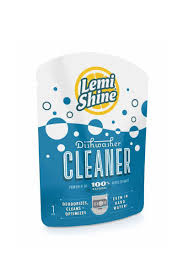It's official – this is how to load a dishwasher properly, according to experts
It's time to resolve the most common household argument – this is the definitive way to load a dishwasher, according to experts
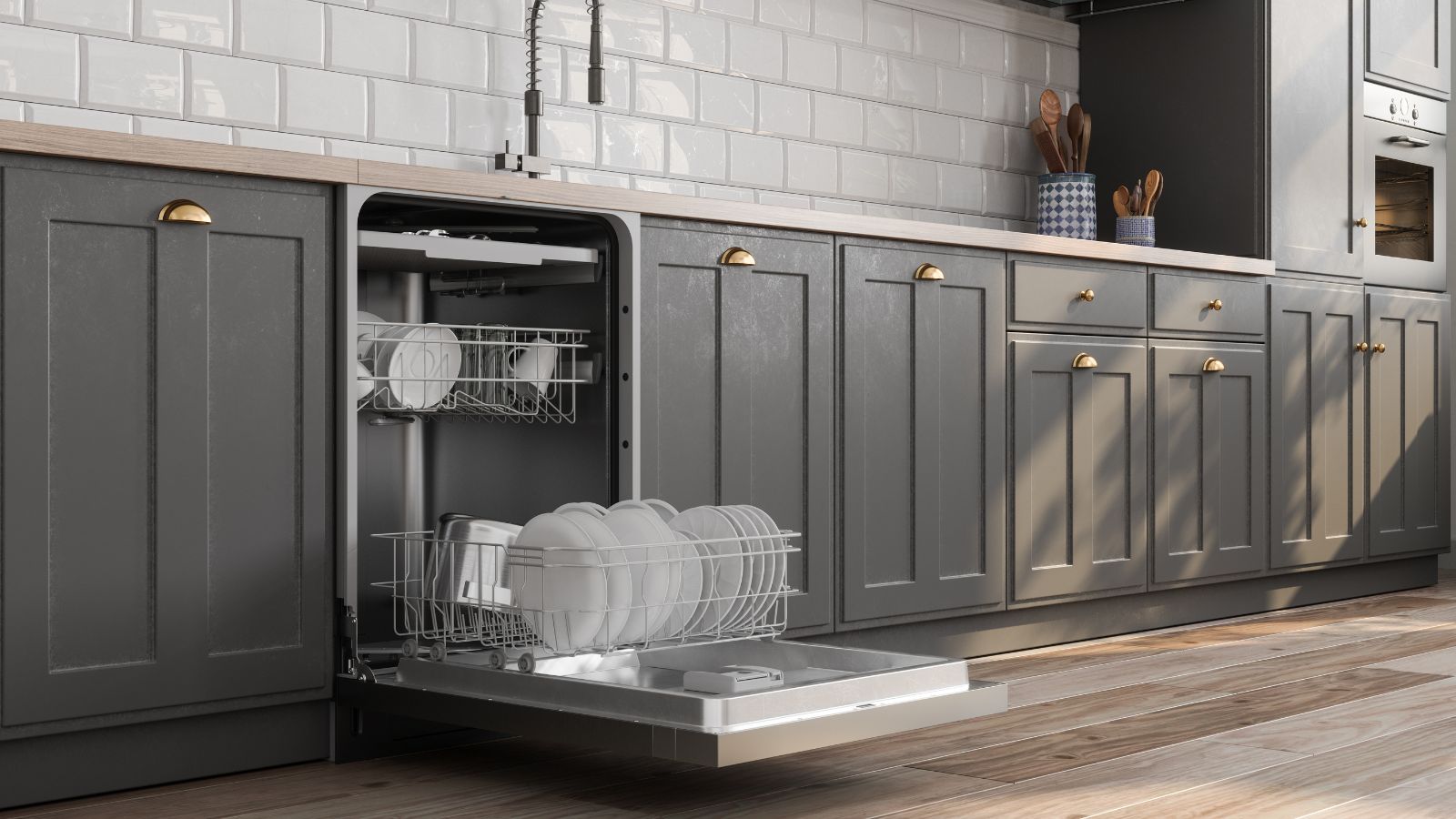

How to load a dishwasher is one of the most common household arguments, with everyone having an opinion on the best way to stack dishes and plates for the best clean.
Even the best dishwasher needs stacking correctly to ensure your dishes come out completely clean and free from grime and food build-up.
Here, professional cleaners set the record straight and explain how to load a dishwasher properly.
How to load a dishwasher properly
Stacking your dishwasher properly is one of the most important dishwasher mistakes to avoid if you want to maintain food hygiene and protect your dishware. With that in mind, this is how to fill your appliance up correctly.
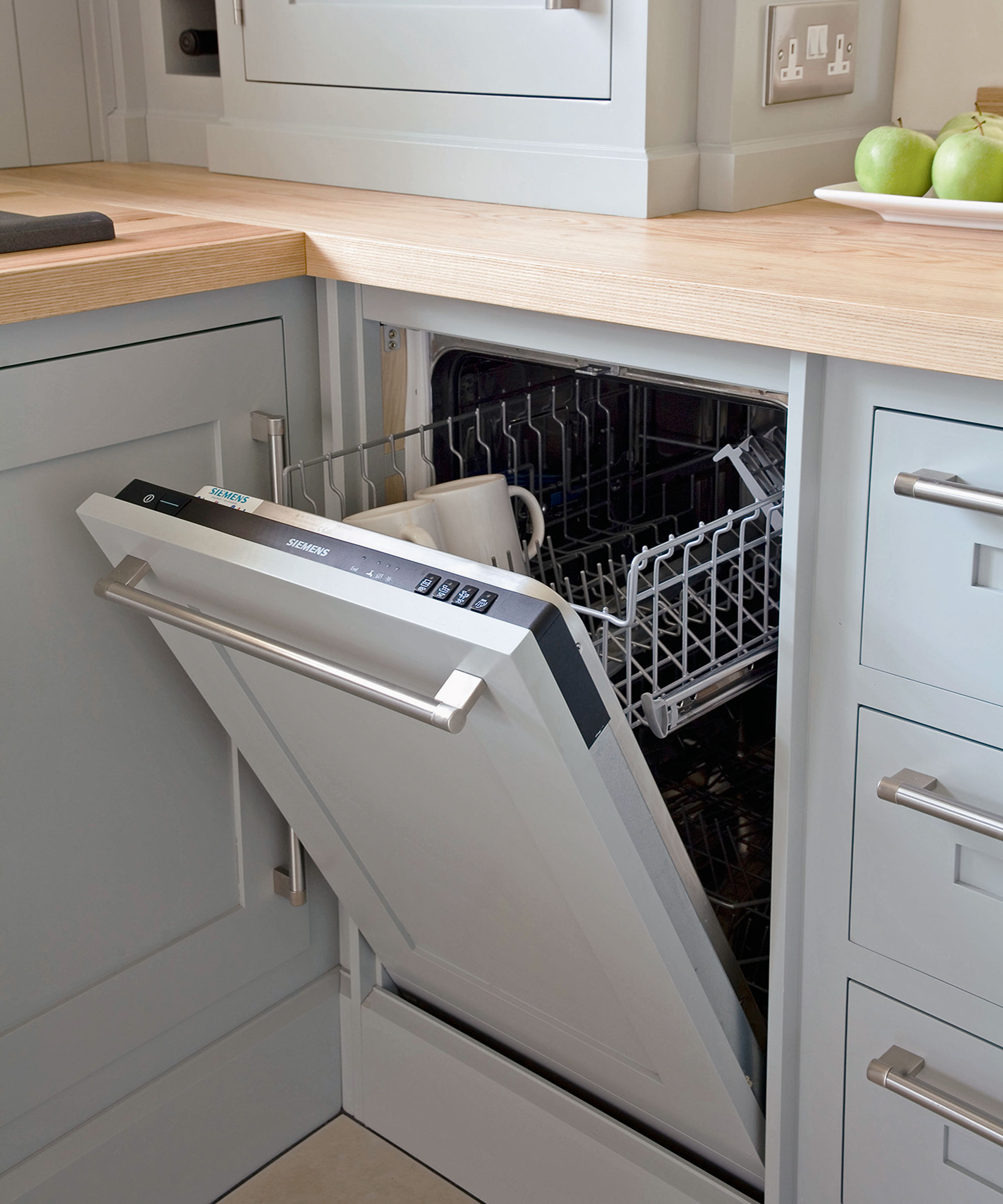
1. Start with placing plates facing inwards
The first thing you should load when filling your dishwasher are your plates, scraped free from any loose food but not rinsed clean. These should be angled inwards so that water jets can clean off the used surface, adds Karina Toner, cleaning expert and operations manager at Spekless Cleaning.
To make the most of space and ensure that they stay upright, you can then squeeze a pan, bowls, or other smaller items into the middle – being sure not to overcrowd, Karina continues. ‘You want water to reach every nook and cranny.’

Karina is the Operations Manager at Spekless Cleaning, a trusted maid service based in Washington D.C. The team has over five years of experience providing top-quality cleaning services for residential and commercial clients. Karina oversees every aspect of the business, ensuring every client gets the same top-notch service and a spotless clean every time.
2. Face pots and pans downwards on a low shelf
'Dishwashers are particularly convenient for washing pans after we have burnt food or cooked a multi-course meal. To ensure they come out completely clean the first time, however, you should stack them face down on the bottom shelf to harness your dishwasher's maximum cleaning power,' explains Will Cotter, professional cleaner and owner of FreshSpace Cleaning. Placing them any higher up or not angling them correctly are common kitchenware cleaning mistakes that often leave food particles that can go moldy.
‘This way, the water jets can reach all the tricky spots and get rid of any leftover food. To avoid any issues, position the handles towards the center so that everything fits perfectly and the dishwasher can do its job without any problems.’
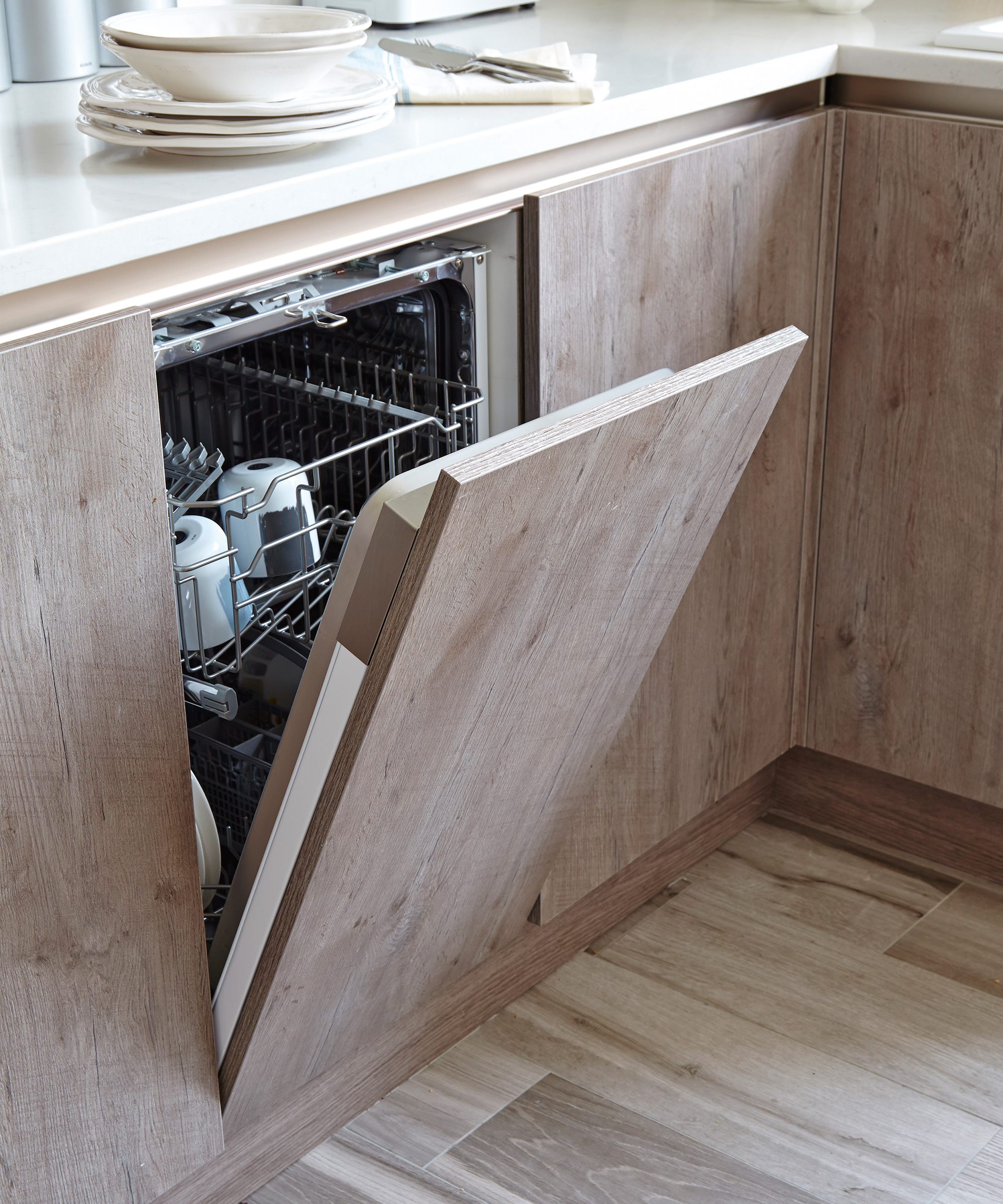
3. Keep utensils and glasses in the designated spots
The easiest spot to fill in a dishwasher is the utensils and glasses sections as they are pre-marked out on the top shelf for convenience.
Michael Grotton, cleaning expert and owner of Germicidal Maids explains that it is important to use these spots as intended to protect your delicate and sharp items:
‘Utensils should be evenly distributed in the utensil basket to prevent nesting (spoons resting against one another) and ensure thorough cleaning. Knives should be placed point-down for safety.
‘To stop glassware from scratching, prevent glasses going cloudy in the dishwasher, and keep cups from chipping, they should be secured between tines to prevent tipping,’ he adds. ‘Be sure to leave space between items to allow water and detergent to reach all surfaces.’
4. Use the top rack for delicates
The top rack of your dishwasher should also be used for other delicate items, such as plastic containers (that are dishwasher safe) and bowls, continues Will Cotter, professional cleaner.
‘The water pressure is lower up there, so it’s less likely that your fragile items will get damaged during the wash,’ he explains, which is why these are things that should go in the top rack of your dishwasher. ‘For example, if you put your plastic containers near the edges, they could get warped and change shape. Plastic is more flexible than other materials, so it’s more prone to change shape when it’s being blasted with water during the wash cycle.
‘Nestle bowls between prongs on the top rack to prevent nesting. That’s when they get stuck together during the wash, which is quite annoying. This works especially well for smaller cereal bowls since it stops them from stacking. This way, the water can get to both the inside and outside of each bowl, giving them a thorough cleaning.’
For some delicate items, you may want to consider washing them by hand.
How to unload the dishwasher
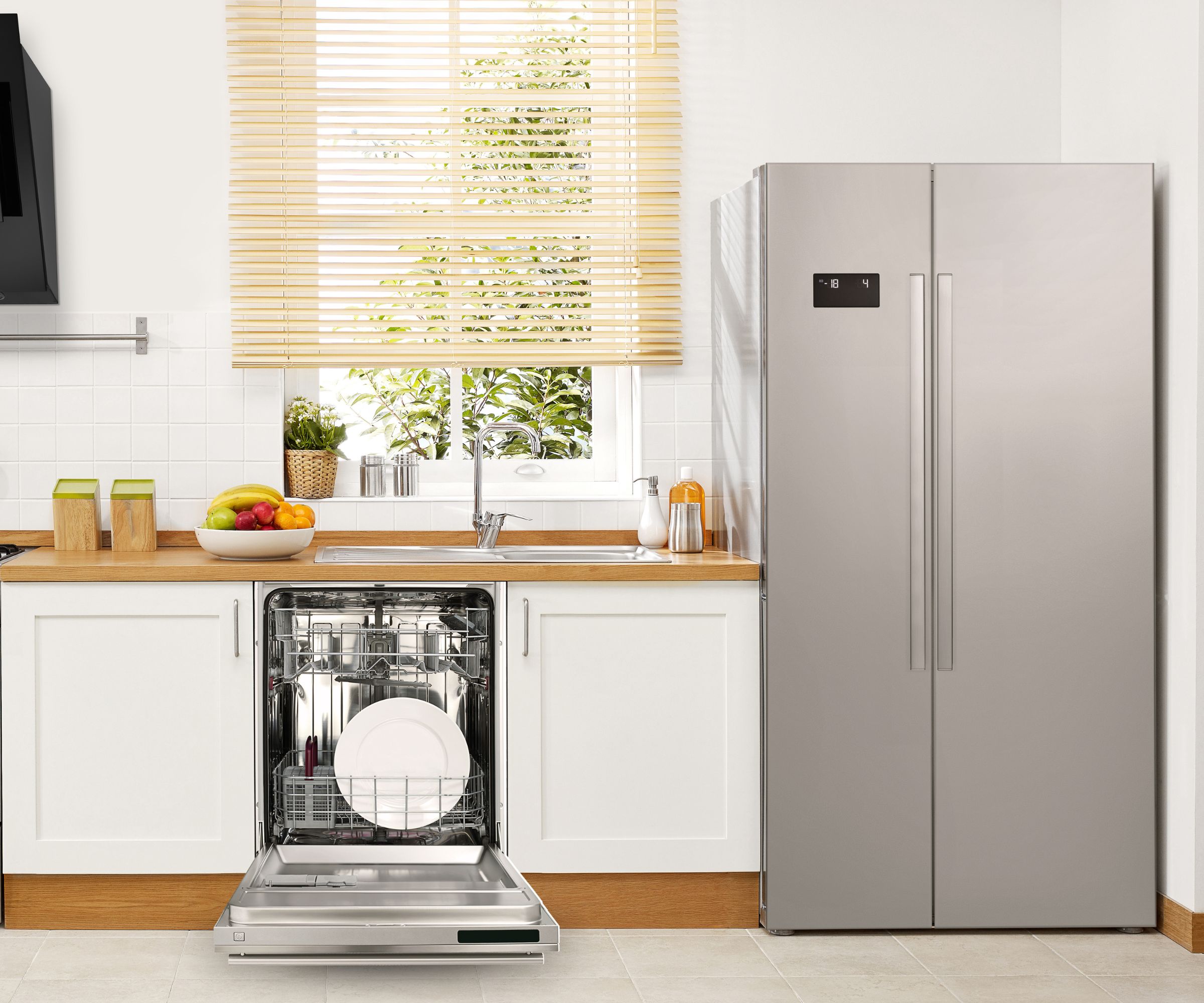
'How you unload the dishwasher is just as important as how you load it if you do not want to break or otherwise muddy items that have just been washed,' warns Will Cotter, professional cleaner:
‘When unloading the dishwasher, start with the bottom rack so that water droplets from the top items don’t fall onto already clean plates and bowls below,’ he suggests. ‘First, take out the plates from the bottom rack, and then move on to the glasses on the top. Make sure to hold them tight when taking them out to avoid water droplets dripping on the dishes below. You can also tilt the glasses to prevent water from collecting in the base.’
Lemi Shine Dishwasher Cleaner | View at Walmart
Regularly cleaning your dishwasher helps keep your kitchenware free from bacteria and can even extend the life of your appliance. This scented dishwasher cleaner is perfect for making a kitchen smell nice.
FAQs
Can I just throw a dishwasher tablet in the bottom of a dishwasher?
When using a dishwasher, it is important to put the dishwasher tablet in the designated detergent drawer to ensure that it is distributed evenly around all of your dishes. Throwing it in the bottom results in uneven cleaning and can even make your dishwasher dirtier as build-up forms on the base.
What are the three most important rules for filling a dishwasher?
The three most important things to remember when filling a dishwasher are to ensure it is full but not overflowing for efficient cleaning, don't put anything in that is not marked dishwasher safe, and always put the dishwasher tablet in the designated location to ensure even cleaning. Neglecting just one of these three things can result in a subpar wash or even shorten the lifespan of your dishwasher.
Before loading a dishwasher, always check to see if the item is dishwasher safe. This is usually stated on the base of the item or in its original packaging. If you are not sure, it is best to leave it to be washed by hand both to protect the item and your appliance from otherwise avoidable damage. Think, if the item is delicate, requires very specific care tips (such as cleaning cast iron), or is made from a soft material like plastic, it is more often than not dishwasher safe.
Sign up to the Homes & Gardens newsletter
Design expertise in your inbox – from inspiring decorating ideas and beautiful celebrity homes to practical gardening advice and shopping round-ups.

Chiana has been at Homes & Gardens for two years and is our resident 'queen' of non-toxic living. She spends most of her time producing content for the Solved section of the website, helping readers get the most out of their homes through clever decluttering, cleaning, and tidying tips. She was named one of Fixr's top home improvement journalists in 2024.
-
 6 items you should always unplug before leaving the house – banish 'phantom power' usage
6 items you should always unplug before leaving the house – banish 'phantom power' usageDon't let these mistakes cost you a small fortune
By Sophie Warren-Smith Published
-
 How to fertilize magnolias – garden experts reveal the secrets to better blooming, and timing is critical
How to fertilize magnolias – garden experts reveal the secrets to better blooming, and timing is criticalMagnolias are famed for their spring flowers, and feeding at the right time can give trees a boost
By Thomas Rutter Published
